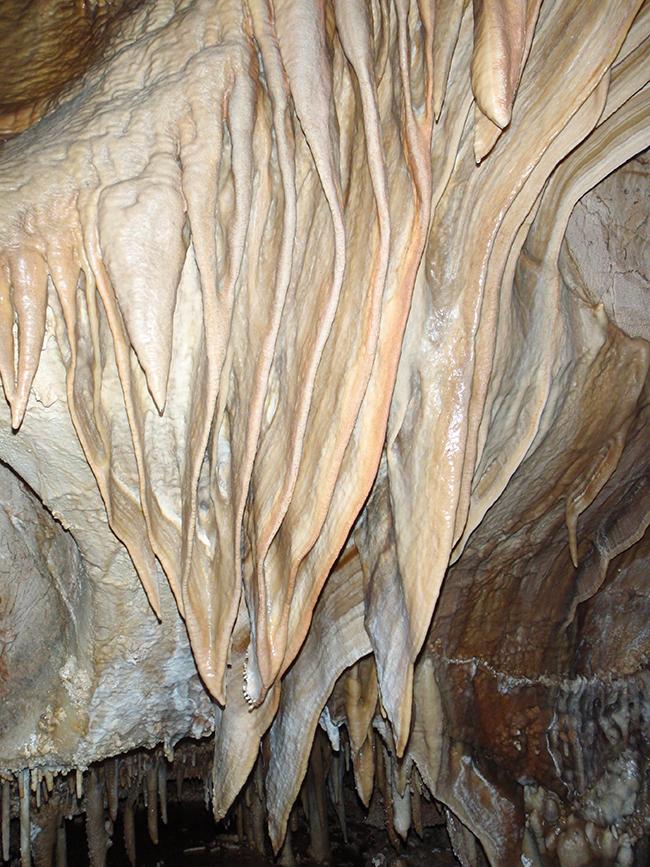While it is true that most caves need water as an ingredient to their formation, not all caves are created in the same way. Jewel Cave at Jewel Cave National Monument in South Dakota is one such cave, created with water involved, but not by any underground springs or rivers like the ones producing Mammoth Cave at Mammoth Cave National Park in Kentucky.

Caver standing near the Crushing Deep, called such because it was the deepest known portion of the cave at the time, Jewel Cave National Monument / NPS file
Before there was a Jewel Cave, there was a shallow sea covering the area that is now this national monument. This occurred during the Mississippian period, 345 – 360 million years ago. During this shallow sea’s presence, sediments, and calcium carbonate shells from marine animals like brachiopods amassed at the bottom to form what is now called the Pahasapa Limestone. You can still see some of those shells embedded within Jewel Cave’s walls.
During periods of sea recession, gypsum (calcium sulfate) crystallized from the evaporating seawater, forming thin beds within the limestone. Ultimately, those gypsum beds collapsed and created voids in the limestone, the first stage of Jewel Cave development.
Over millions of years, this shallow sea continued advancing and receding. During each recession, fresh rainwater dissolved exposed portions of the limestone to create sinkholes and caves, which were subsequently filled in with sediments forming the sandstone/limestone/dolomite Minnelusa Formation. Like the fossil shells, you can see some of this reddish Minnelusa paleosol (a stratum or soil horizon that was formed as a soil in a past geological period) in Jewel Cave’s upper passages.
Sixty million years ago, after that shallow sea receded for the final time, Black Hills began forming and were thrusted upward thousands of feet. Because of this upthrust, younger sedimentary rocks were eroded away to expose the much older (4.54 billion years - 542 million years) Precambrian rocks. What remained of the sedimentary rocks tilted away from the center of this uplift. Jewel Cave is in the southwestern Black Hills, where the sedimentary rocks tilt (or "dip") at an angle of approximately 4 degrees from the northeast to the southwest.
Forty million years ago, the climate changed to a much wetter environment. Rainfall increased, seeped below ground, and flowed along soils rich in calcium carbonate which ultimately transformed the rainwater into carbonic acid, a weak acid that wouldn’t eat up your hand but is still strong enough to eat away at the limestone around it. This weakly-acidic water traveled through fractures in the rock, enlarging the fractures and dissolving the surrounding rock. Thus began the greater creation of Jewel Cave.
Eventually, speleothems (cave formations) developed in the now-emptied and enlarged cavities of Jewel Cave. What kind of speleothems? Click here to read formation details and see photos of the cave formations you might see (and cavers exploring the depths have definitely seen).
To learn about Jewel Cave’s geology in greater detail, with photos, figures, and maps, you can download and read the 2009 Jewel Cave National Monument Geologic Resources Inventory Report.

Cave drapery speleothem created when calcium carbonate-laden water flows down a sloped ceiling, depositing its calcium load before dropping to the floor, Jewel Cave National Monument / NPS





